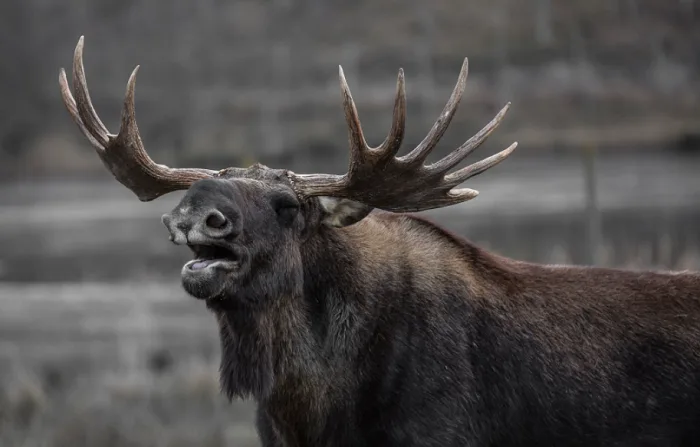
Officials warn public not to feed 'hangry' moose
The moose are out and they're looking for food.
Moose are out and about in Alaska, prompting several nuisance calls from residents and a warning from officials to keep a safe distance.
Speaking with Alaska News Source, Alaska Department of Fish and Game Anchorage area wildlife biologist Dave Battle says it's normal to see more moose in early spring, but they're on a mission.
After months of food scarcity, they're looking to put on weight and Battle says they can be 'moody':
“They’re basically ‘hangry,’” Battle told the news outlet. “They’ve gone through the winter, they don’t have hardly any nutrition and are just trying to make it through. Their fuses are a little bit short.”
Recent snow in southcentral Alaska isn't helping, because the hungry moose are looking for the easiest paths -- i.e., those cleared away by humans. That means they're turning up on roadsides, increasing the risk for collisions.
THE DANGERS OF FEEDING MOOSE
Feeding wildlife is unsafe for humans and animals. Moose may seem tame when being fed, but could attack the next person who comes along without a snack, Battle says.
Wild animals may also become dependant on handouts, which can weaken their chances of survival.
“Sometimes it doesn’t take many encounters," Division of Wildlife Resources Conservation Outreach Manager Scott Root told KPCW in 2019.
"Sometimes they just become dependent and they want food from people the second or third time they’ve been fed. Please give moose their space. If we purposefully feed deer and elk and moose, you’re probably at risk of bringing in predators as well. When that moose loses its fear of humans, that causes problems as well. We may have to move that moose. We just want people to enjoy the moose but keep your distance.”
And while this is a cautionary tale from Alaska, it's a warning we should heed here in Canada as well as we are home to anywhere between 500,000 and 1 million moose, according to the Canadian Wildlife Foundation.
Other risks of excessively feeding wildlife, according to Upper Thames River Conservation Authority include:
The potential for increased disease transmission
Illness, as the animals may eat food incompatible with their digestive systems
Influencing migration patterns
Giving some animals a competitive advantage over others, which may upset ecological balance
Fortunately, the moose should mellow out soon. As spring marches forward and more food becomes available, they're more likely to venture into the woods and away from human-inhabited spaces.
Thumbnail image courtesy: Pixabay.











